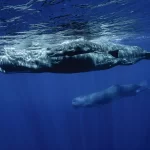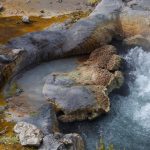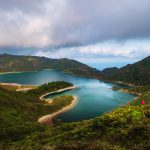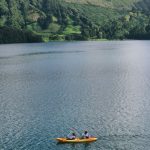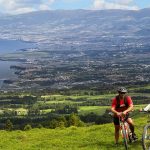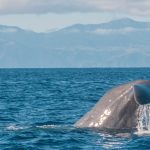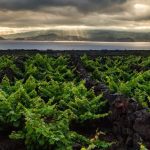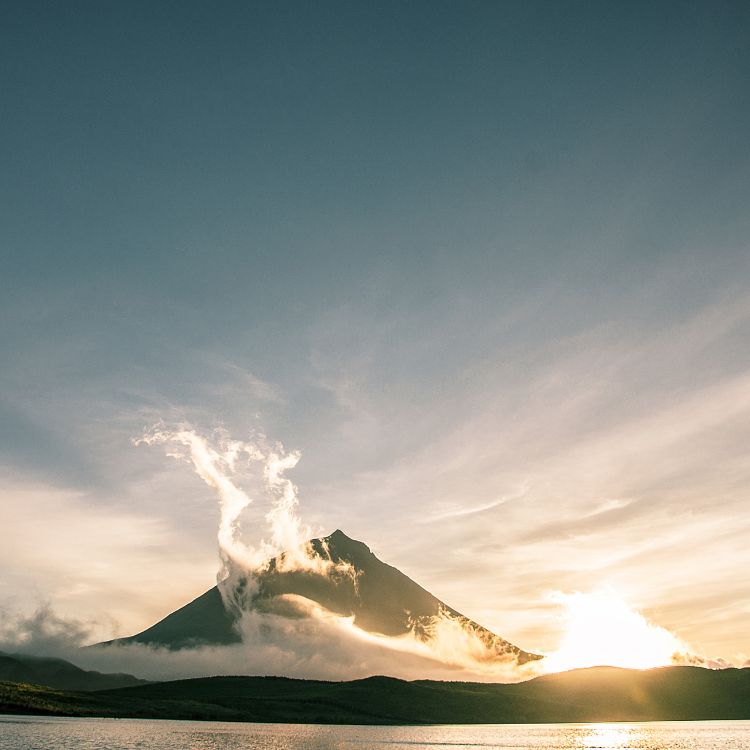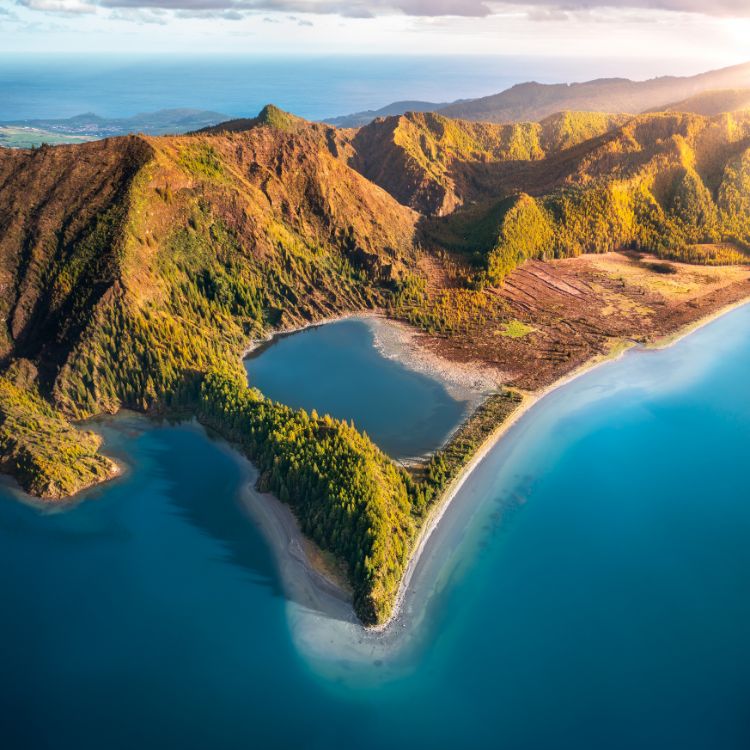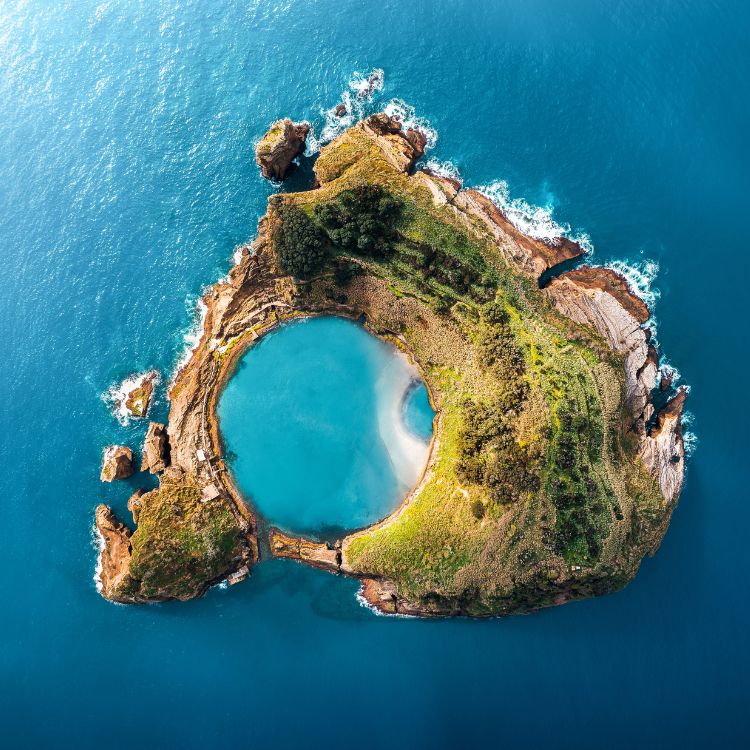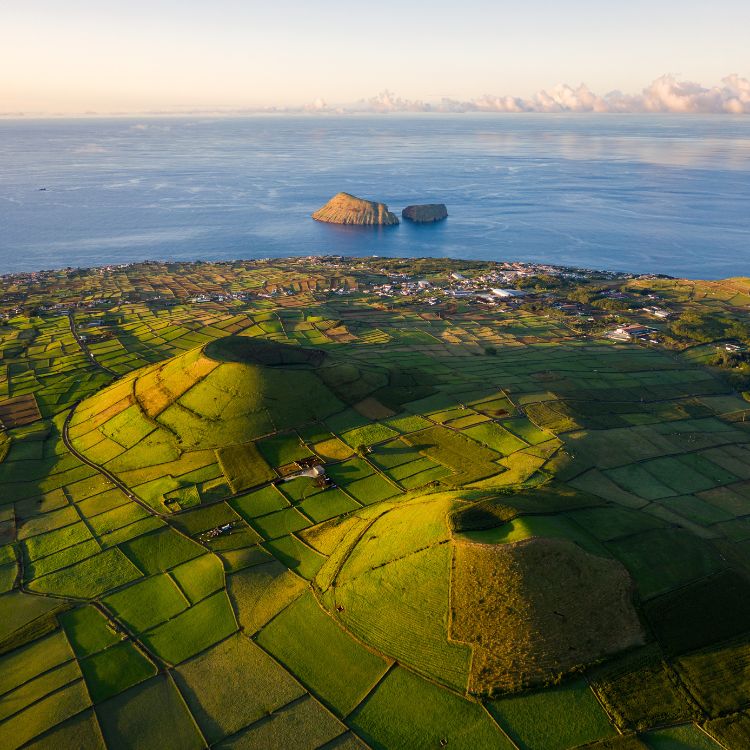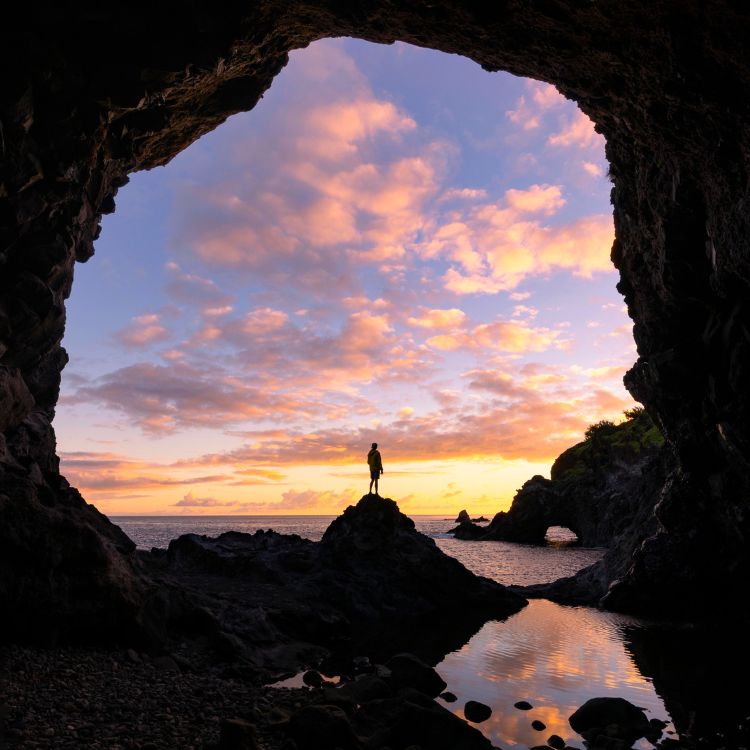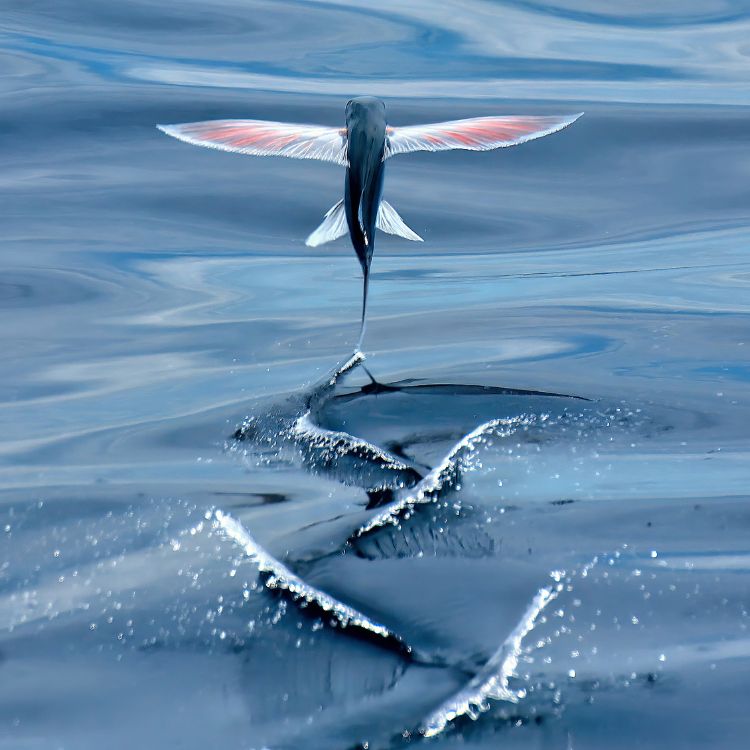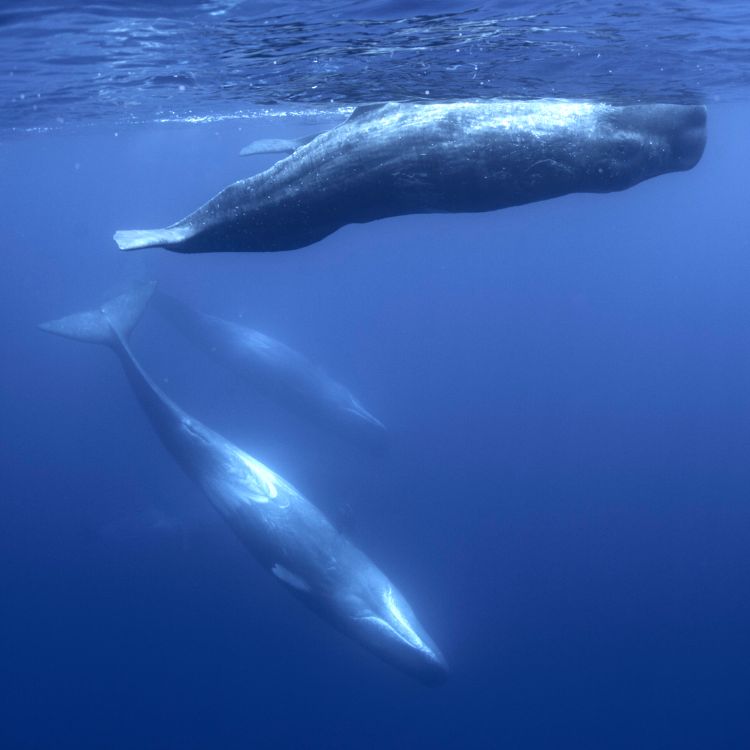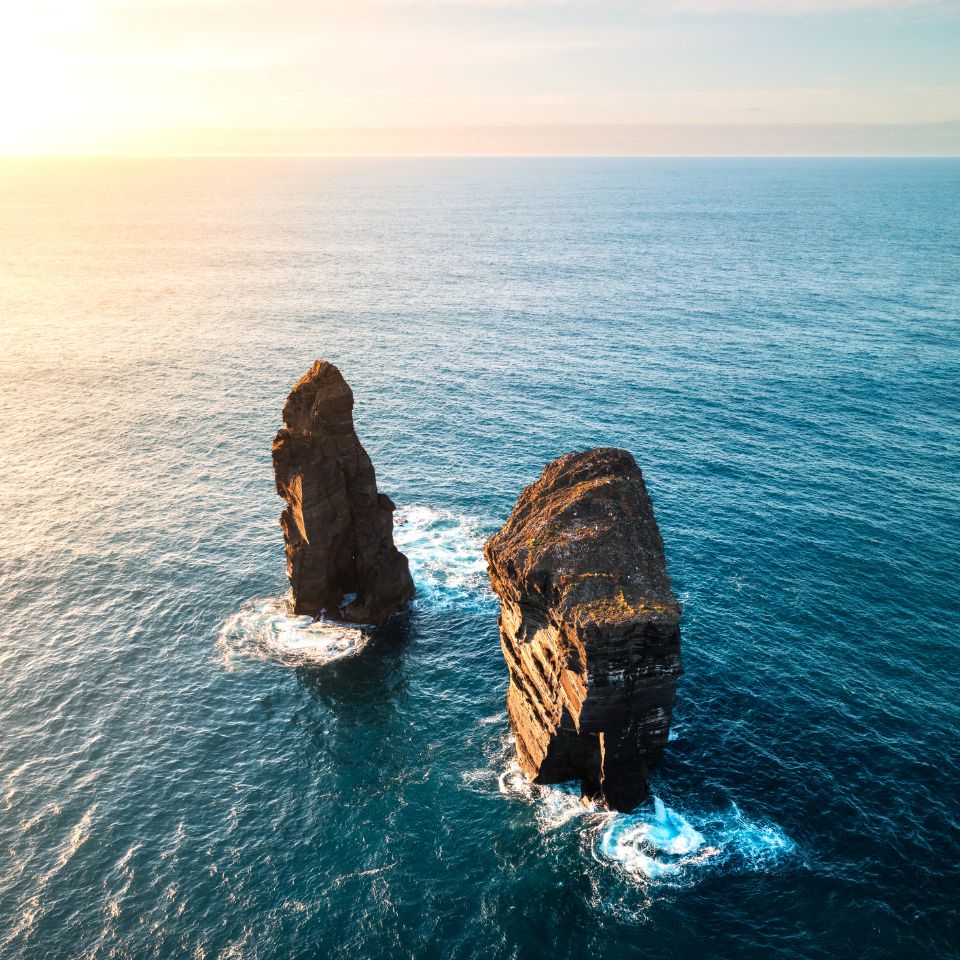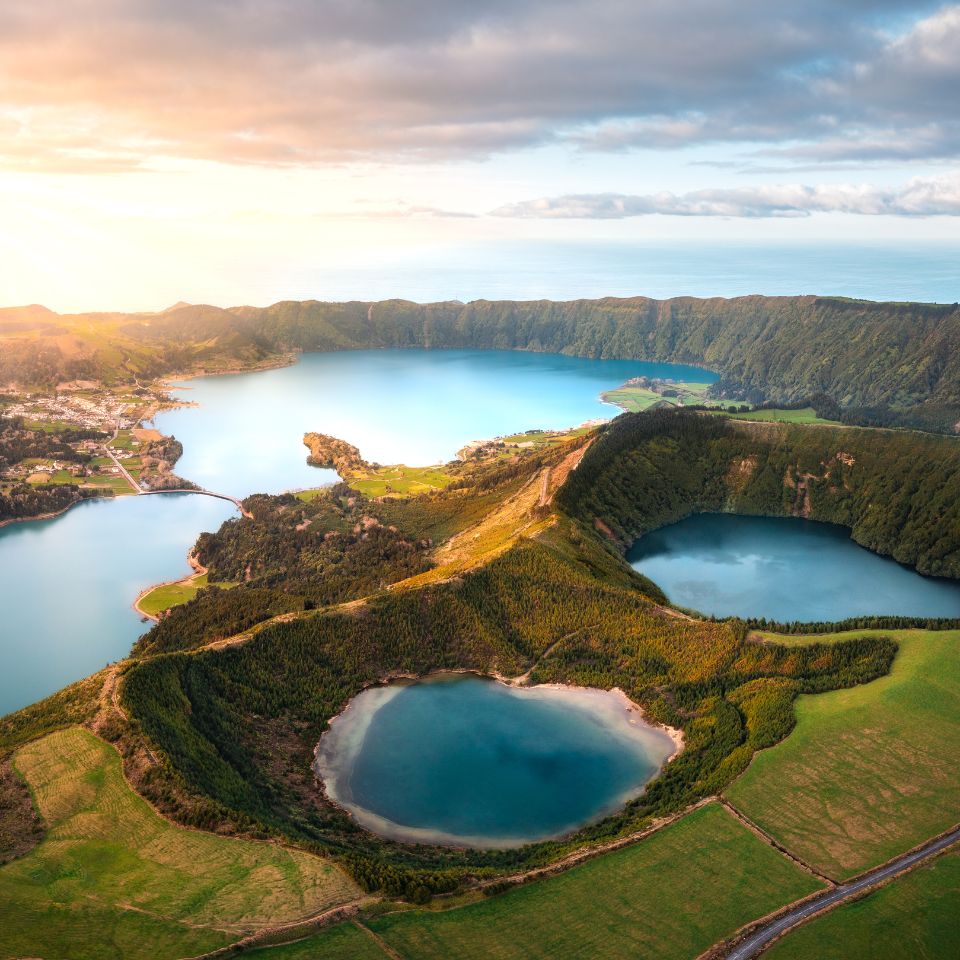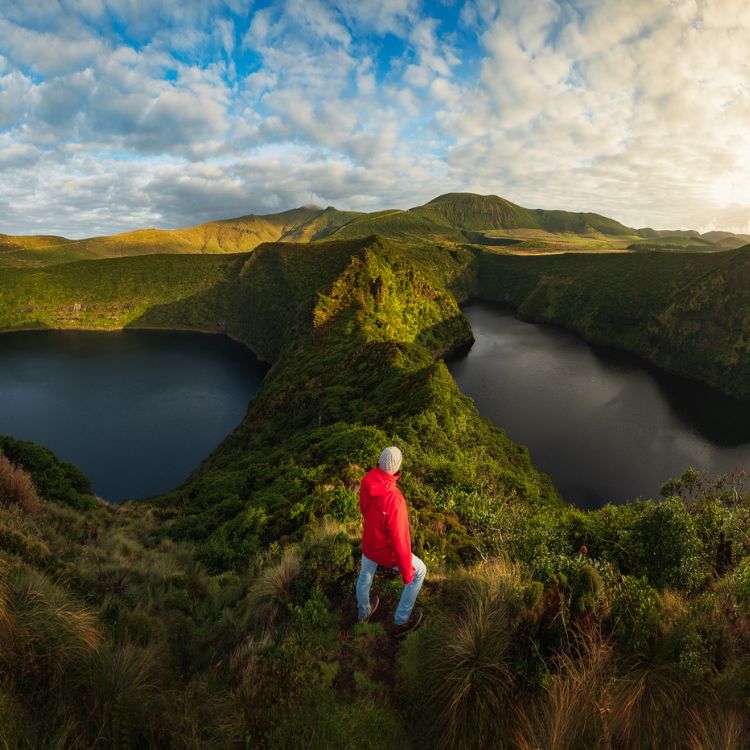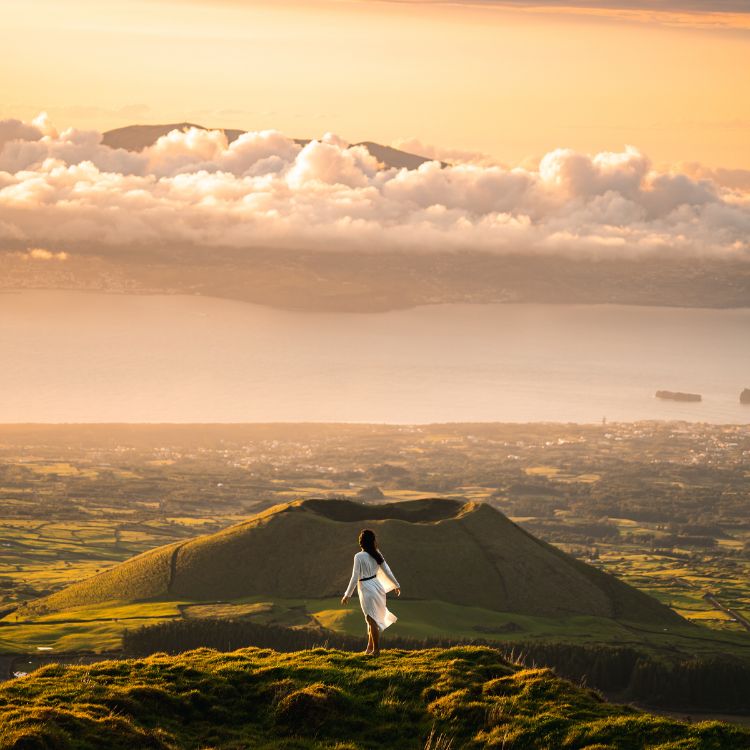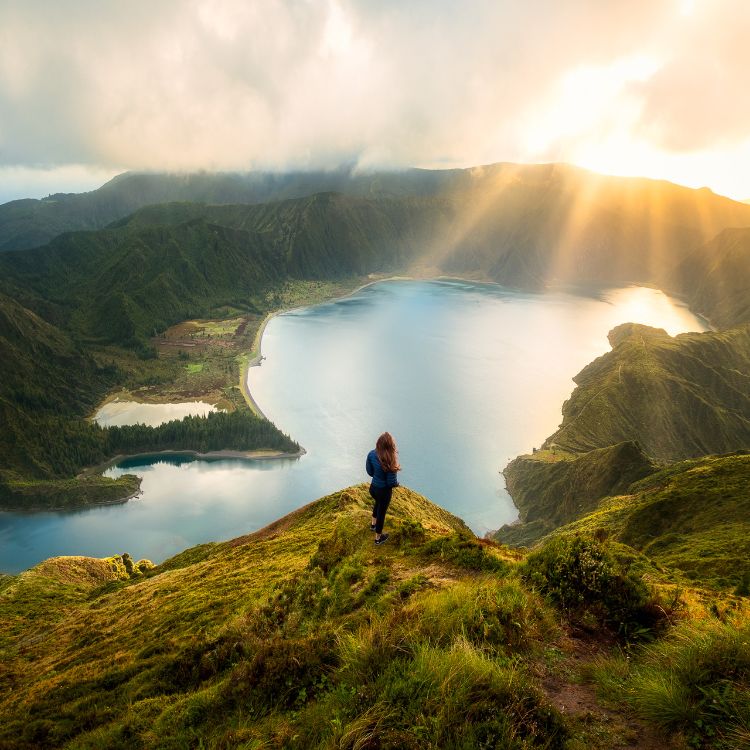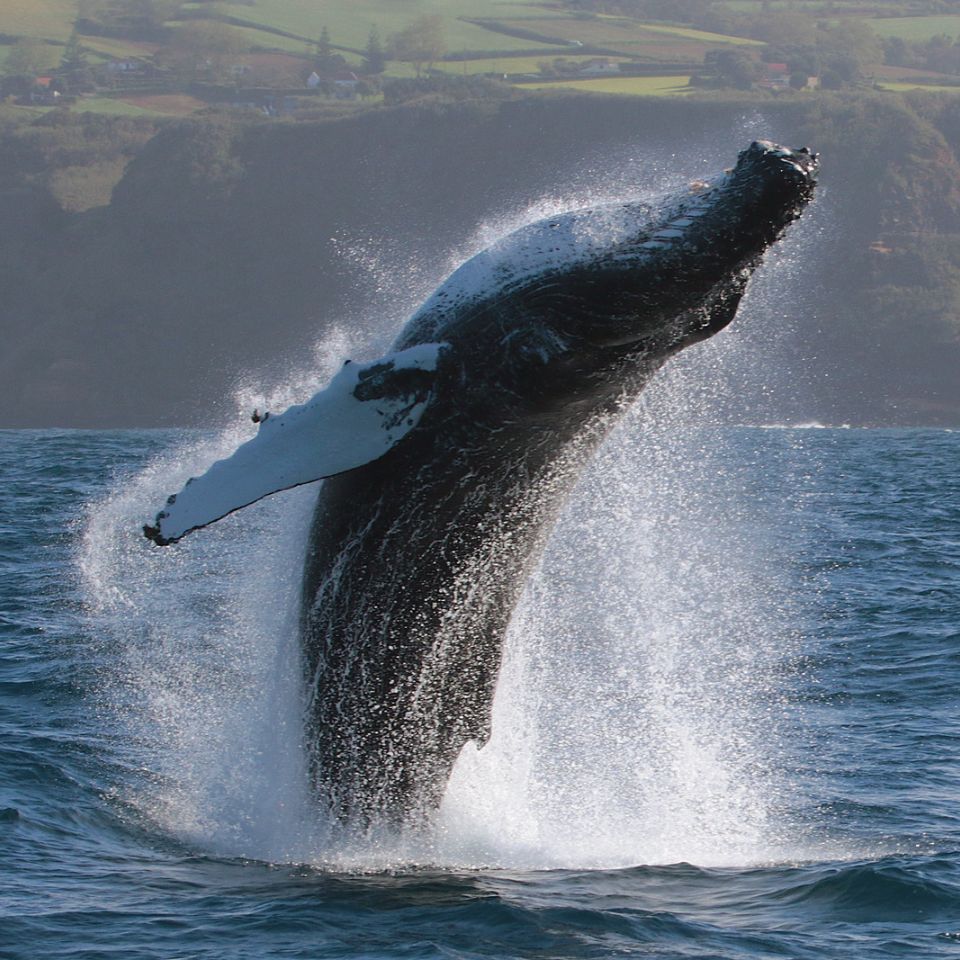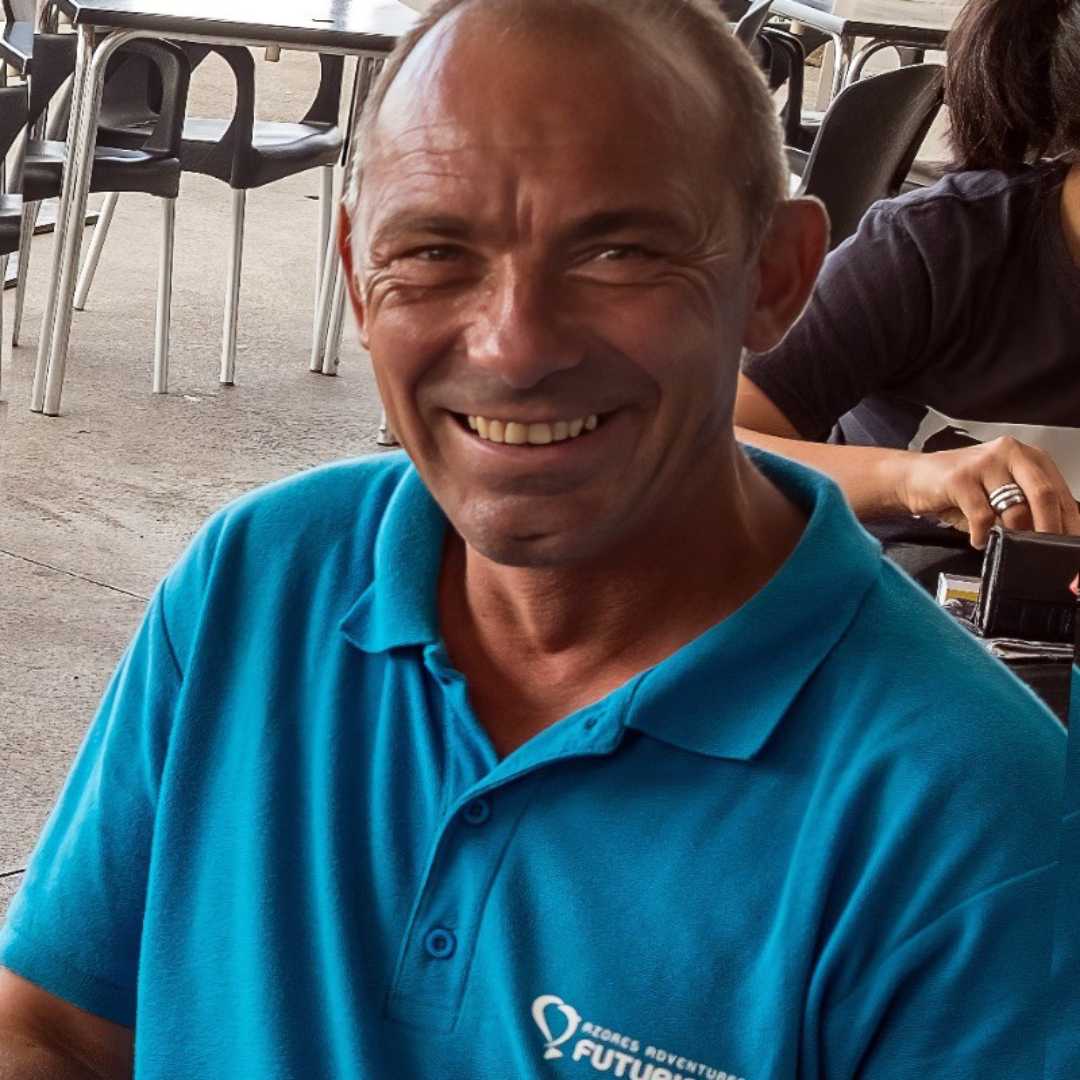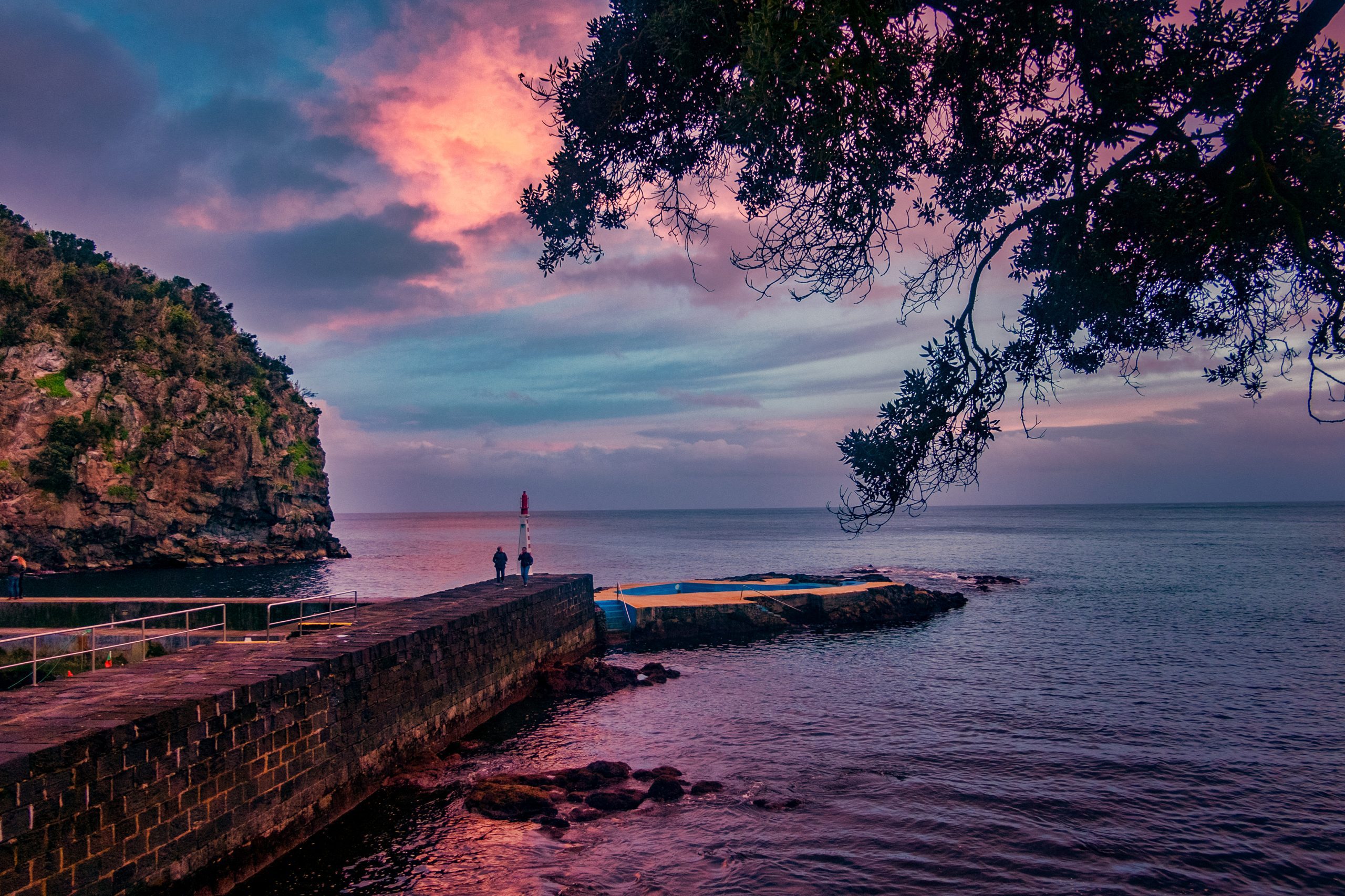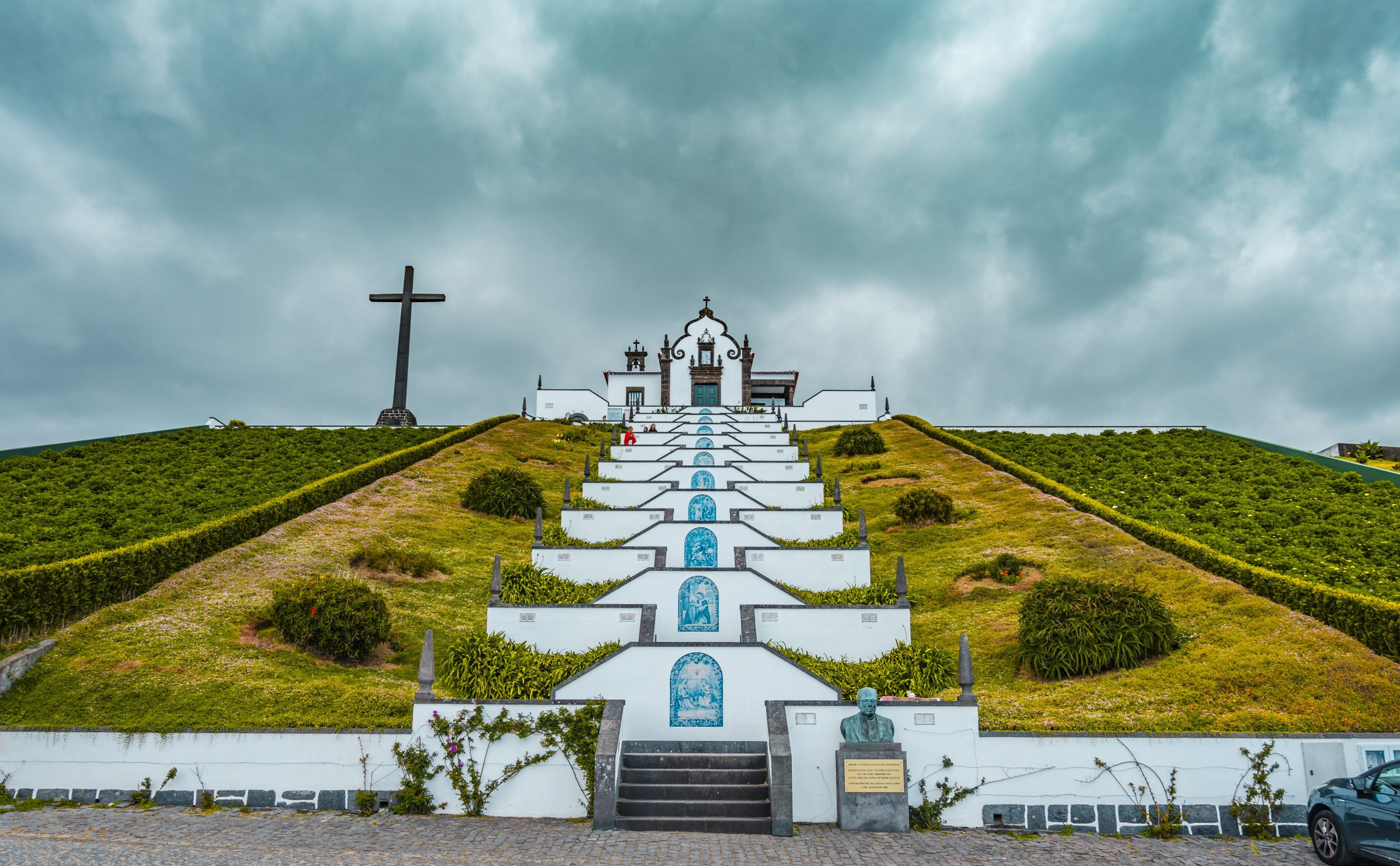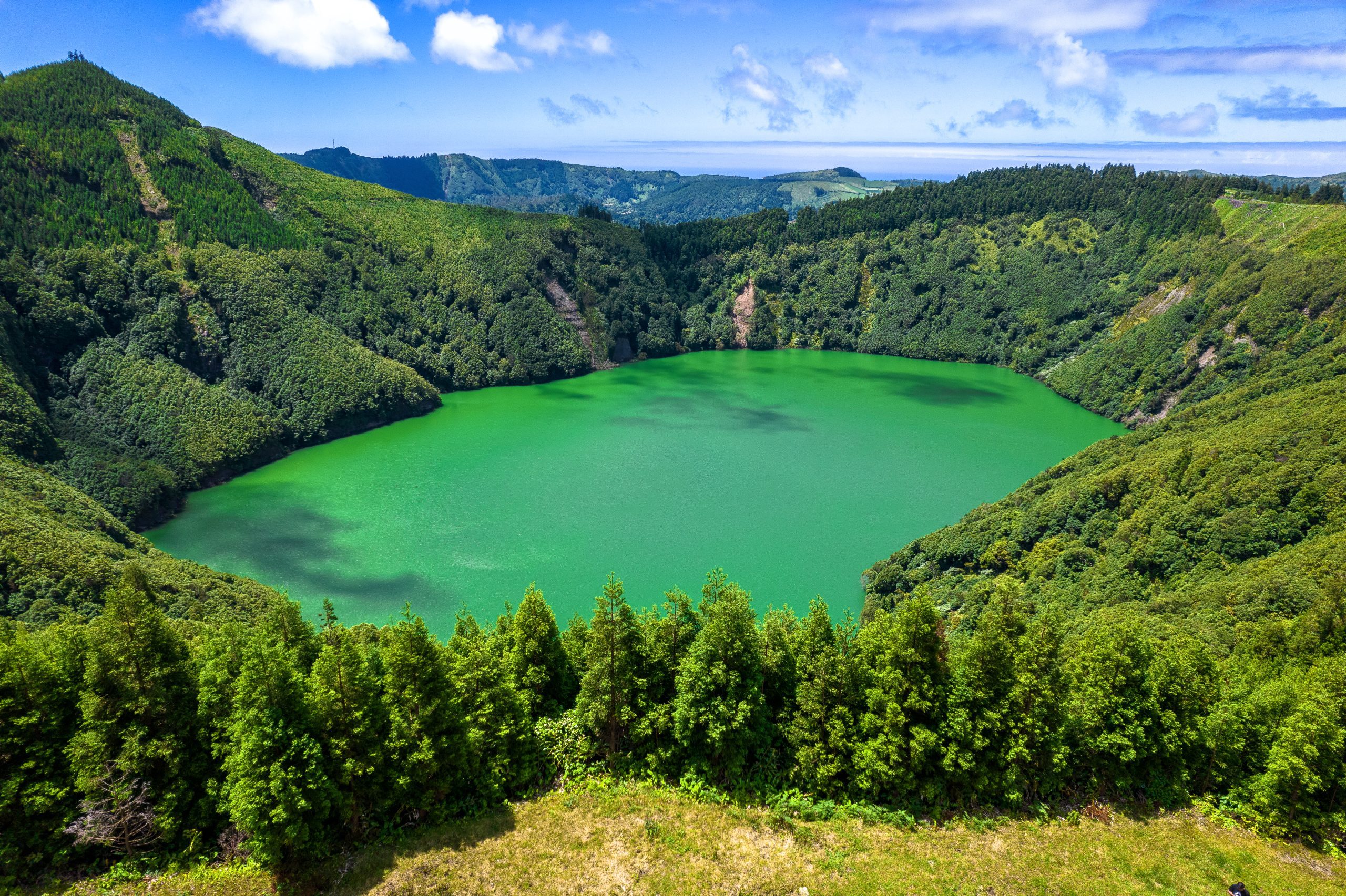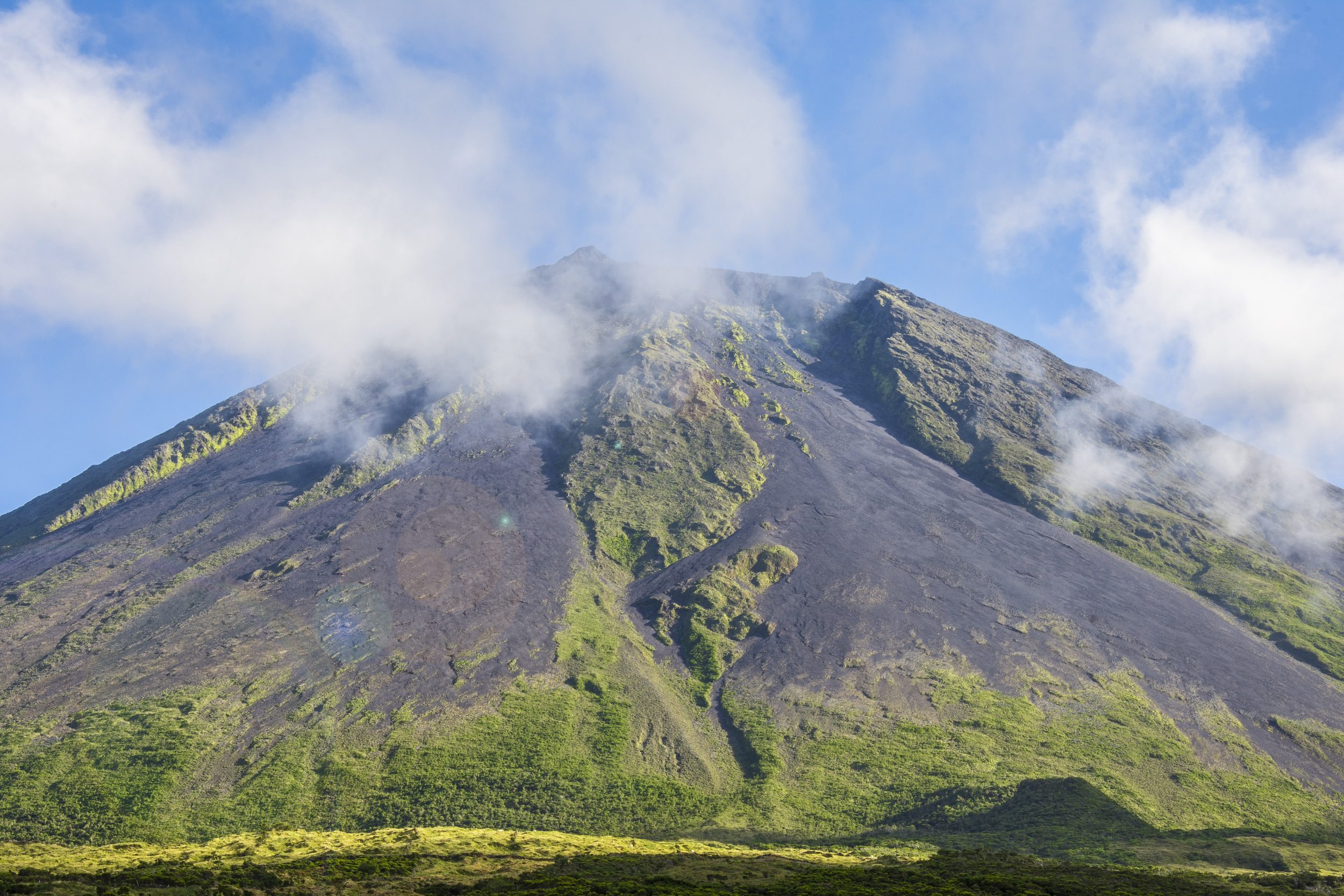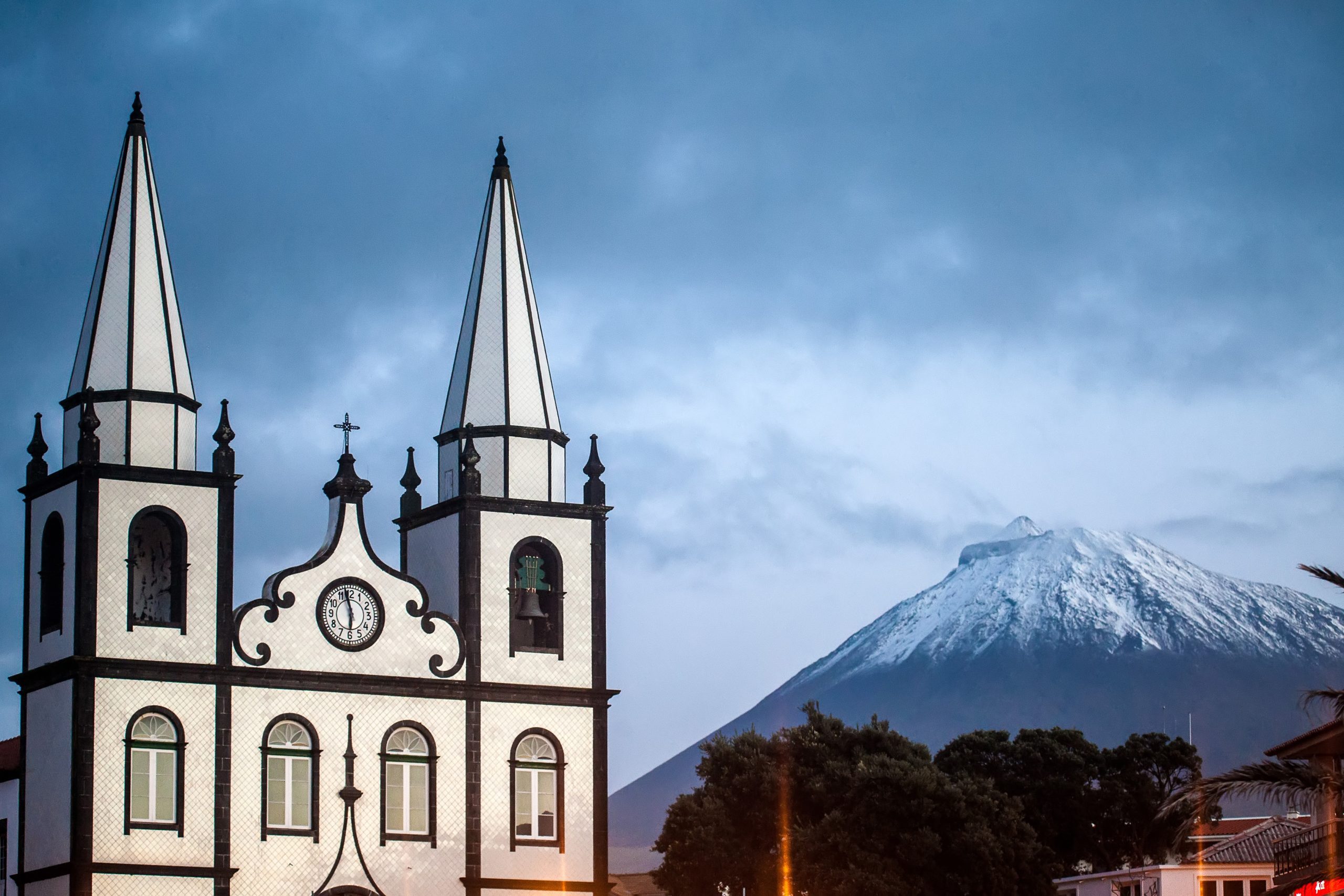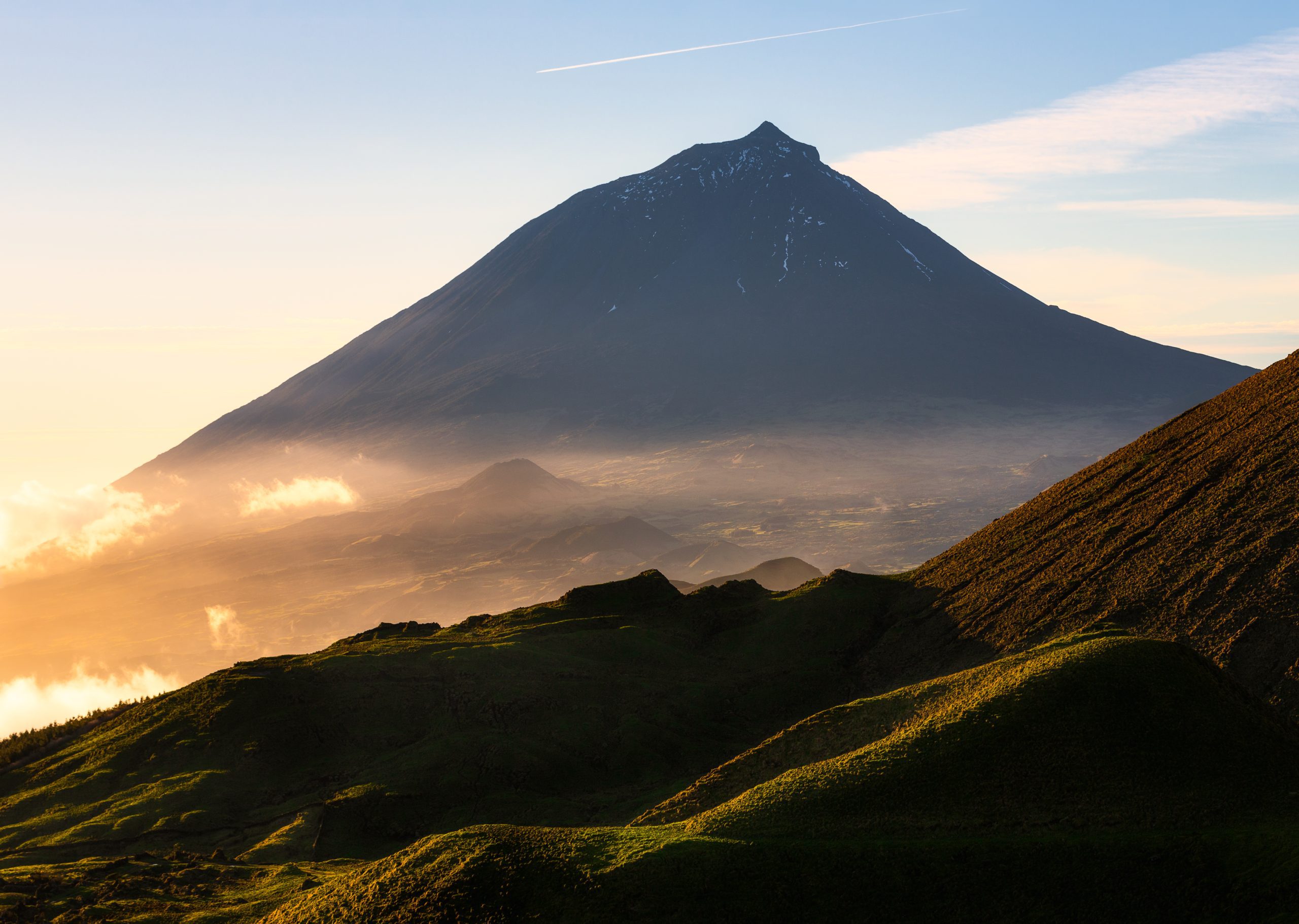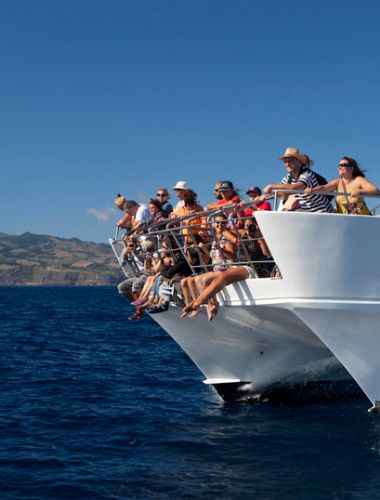São Roque do Pico, nestled on the stunning island of Pico, proudly holds the title of the Azores’ capital of rural tourism. Historically shaped by hunting and whaling, this charming town offers a rich blend of cultural heritage, breathtaking nature, and unique attractions.
Beyond its fascinating past, São Roque do Pico invites visitors to explore serene lagoons, lush vineyards, and captivating viewpoints. Its remarkable monuments and vibrant landscapes make it a must-visit destination for those seeking authenticity and tranquility.
Join us as we uncover what makes São Roque do Pico a true gem of the Azores!
Where is São Roque do Pico

São Roque do Pico is a town and its region’s municipal seat, located on Pico Island in the Azores. Established in 1542 by King João III, it comprises five charming parishes: Prainha, Santa Luzia, Santo Amaro, Santo António, and São Roque do Pico.
With its volcanic origins, the town thrives on fertile soils ideal for cultivating Verdelho wine and premium fruits. Vast vineyards and orange orchards highlight its agricultural legacy, offering visitors a taste of Pico’s rich traditions.
History
São Roque do Pico has long been important in the Azores’ history. Established in 1542 as the second town on Pico Island, its early settlers focused on fishing and agriculture, especially vine growing.
The region’s volcanic soils proved ideal for Verdelho wine production, which became a highly valued export to Europe and the Americas. However, the 19th century brought vine diseases severely impacting wine production, pushing the community to whaling as a new livelihood.
Despite these challenges, São Roque do Pico has adapted and thrived. Today, its residents celebrate and preserve the town’s rich cultural heritage and agricultural traditions.
Culture & Festivities
The Espírito Santo festivals deeply shape São Roque do Pico’s cultural identity. The island’s first settlers introduced these celebrations to seek protection from natural disasters, and the community still cherishes them.
At the heart of the festivities lies the crowning ceremony, where a child carries a scepter and a silver plate — symbols of the Holy Spirit. This grand celebration unites the community on the seventh Sunday after Easter, highlighting its devotion to preserving its heritage.
São Roque do Pico showcases its distinctive handicrafts, reflecting the region’s rich artisanal legacy. These include crochet lace, straw hats, reed mats, and scrimshaw.
These rich traditions and crafts showcase São Roque do Pico’s cultural heritage and emphasize the community’s commitment to preserving skills and stories passed down through generations.
What to Do in São Roque do Pico
Whaling Industry Museum: Dive Into Pico’s Maritime Legacy


The Whaling Industry Museum, also known as the Museum of the Old Factory of Whaling Frames, is located at the Commercial Port of Cais do Pico. Housed in the former Factory, it preserves and shares the story of Pico Island’s industrial whaling era.
Since 1942, this factory has processed whales into oils, vitamins, flours, fertilizers, and teeth and ambergris for perfume production. After ceasing operations in 1981, the factory transformed into a museum in 1994, inviting visitors to explore this pivotal chapter of Pico’s history.
Today, the museum vividly brings this heritage to life. Visitors can explore the tools and equipment used in whale processing, gaining insight into whaling’s crucial role in the island’s economy and culture. This unique site provides an immersive journey into Pico’s maritime past, bridging industrial history with its natural surroundings.
Convent of São Pedro de Alcântara: A Landmark of São Roque do Pico’s History

Located near the Pico de São Roque pier, the Convent of São Pedro de Alcântara is one of São Roque do Pico’s most emblematic landmarks. Built in 1658, this historic monument originally served as part of the Chapel of Nossa Senhora do Livramento and belonged to the Ordem dos Frades Menores, a religious order deeply rooted in the region’s cultural history.
After the Ordem dos Frades Menores ceased operations, the convent served multiple civic and cultural purposes, such as a prison, court, tax office, cinema, concert hall, headquarters for cultural and sports associations, and even São Roque do Pico Town Hall.
Today, the Convent of São Pedro de Alcântara has become a Youth Hostel, proudly part of the Azores Youth Hostels Network. This modern adaptation allows visitors to immerse themselves in the site’s rich history while enjoying its hospitality, making it a must-see for those exploring São Roque do Pico.
Lagoa do Capitão: A Mirror of Pico’s Majesty

Lagoa do Capitão is one of Pico Island’s most iconic lagoons, offering breathtaking views of Portugal’s highest mountain. The reflection of Pico Mountain in the lagoon’s crystal-clear waters creates a captivating and serene setting, making it a must-visit for nature enthusiasts.
Situated at over 800 meters, this picturesque lagoon thrives amidst the lush endemic vegetation of Macaronesia. Visitors can explore the area and discover unique flora such as Erica azorica, holly, cedar, and laurel. Birdwatchers may also spot fascinating species like the mockingbird.
Lagoa da Rosada: A Hidden Gem of Pico Island

Lagoa da Rosada sits inside a volcanic crater at approximately 900 meters altitude, surrounded by endemic Azorean Macaronesian vegetation and vast pastures. This serene spot offers a tranquil escape, inviting visitors to connect with nature. Nearby, Lagoa do Ilhéu and Lagoa do Peixinho add to the charm, creating a peaceful haven perfect for exploration.
Lagoa do Peixinho: A Sanctuary for Wildlife Enthusiasts
Lagoa do Peixinho lies around 900 meters above sea level, surrounded by volcanic cones and lush Azorean forest vegetation. This tranquil area invites visitors to immerse themselves in nature while enjoying the serene atmosphere.
The lagoon is home to some of the rarest fauna in the Azores, including species like the American Wigeon, Collared Petrel, and Azure-winged Tortoise. Additionally, visitors flock to Lagoa do Peixinho to witness the spectacular mating rituals of the snipe, a fascinating South American bird.
Lagoa do Caiado: The Largest Lagoon on Pico Island

Nestled within the Partial Natural Forest Reserve of Lagoa do Caiado on Pico Island’s central plateau, Lagoa do Caiado is the island’s largest lake, spanning approximately 18.8 hectares. Situated at an altitude exceeding 800 meters, the area’s high humidity lends its vibrant green hues to the surrounding landscape, creating a serene and picturesque setting. The lagoon is home to numerous ducks, making it a favored spot for duck watching, although strong winds and fog often deter birdwatchers.
Since 1993, the waters of Lagoa do Caiado have been an essential resource, supplying the public network managed by São Roque Municipal Council. This peaceful location offers a tranquil escape into Pico’s natural beauty, perfect for those seeking a serene connection with the island’s unique ecosystem.
Prainha Forest Reserve: A Perfect Blend of Nature and Leisure


The Prainha Recreational Forest Reserve spans approximately 15 hectares, blending natural beauty with recreational facilities. This expansive area features a viewpoint, picnic spots, a children’s playground, a multi-sports field, and a camping site, making it ideal for family outings or peaceful retreats.
The forest reserve boasts well-maintained trails lined with endemic and ornamental vegetation, including heather, beech, pine, and incense. Visitors can also explore a traditional winery and house within the reserve, offering a glimpse into Pico’s cultural heritage.
Santa Luzia Forest Reserve: A Peaceful Natural Retreat
The Santa Luzia Recreational Forest Reserve occupies a flat area of approximately 6 hectares. It is ideal for enjoying leisure moments in contact with nature. The reserve’s wooded areas are home to Laurissilva vegetation, featuring majestic maritime pines, beeches, and incense trees. Its botanical variety includes endemic species like Heather, White Wood, Sanguinho, and Laurel, creating a vibrant and diverse natural environment.
Visitors can enjoy well-maintained facilities, including picnic areas, a children’s playground, exercise equipment, a fallow deer display, and sanitary facilities. The reserve’s open space and amenities also make it a venue for religious and cultural events like masses, scout camps, and local festivals. It’s an ideal spot to relax, explore the Azorean flora, or spend quality time with family and friends.
Cais Natural Pool & Furna de Santo António: São Roque’s Coastal Gems


The Cais Natural Pool in São Roque do Pico is a favorite spot for snorkeling and swimming. Its basalt slab bottom and open sea access blend natural beauty with modern comfort. Landscaped gardens and concrete paths create a scenic and welcoming space for all.
Nearby, the Furna de Santo António, a natural lava cave, adds a unique touch to the experience. This serene spot showcases Pico Island’s volcanic origins, offering nature lovers and geology enthusiasts a peaceful retreat.
Both sites proudly hold the Bandeira Azul award, ensuring exceptional water quality. Whether swimming, snorkeling, or relaxing, these destinations promise unforgettable moments on Pico Island.
Explore More Treasures in São Roque do Pico
Beyond the well-known attractions, visitors can explore many other unique sites in São Roque do Pico. Dive into its cultural and natural heritage with these highlights:
- Lajido da Criação Velha (vineyard cultivation);
- Lajido de Santa Luzia (vineyard cultivation);
- Interpretative Centre of Paisagem da Cultura da Vinha da Ilha do Pico;
- Casa dos Vulcões;
- Corre Água Viewpoint.
Each destination adds a distinct layer to São Roque do Pico’s story, ensuring an enriching experience for every visitor. The town offers endless opportunities to create unforgettable memories, whether delving into history, culture, or nature.
Plan Your Visit to São Roque do Pico
Best Season to Visit Pico Island
Pico Island, located in the Central Group of the Azores Archipelago, offers a mild and pleasant climate year-round. Its volcanic landscapes, lush vineyards, and rich cultural heritage make it a fascinating destination in any season. Temperatures on Pico Island remain fairly stable throughout the year, typically ranging between 14 °C in winter, 16 °C in spring, 21 °C in summer, and 18 °C in autumn.
This consistency allows visitors to enjoy outdoor activities like hiking, vineyard tours, and exploring natural pools no matter the season. However, summer is best for swimming, snorkeling, and basking on the island’s sunny days.
→ Related article: 15 Unique things to do in Pico Island
Best Time to Visit São Roque do Pico
São Roque do Pico offers year-round charm, but the summer months (June to September) are optimal for exploring the town’s natural and cultural highlights.
Warm, sunny days provide perfect opportunities to swim in crystal-clear natural pools or relax by the serene lagoons. The vineyards and trails are in their prime, with lush greenery creating a stunning backdrop for leisurely walks or scenic drives.
For marine enthusiasts, São Roque’s waters are rich in marine life, making snorkeling and diving a must-try activity during the summer. Additionally, this is the best time to visit historical landmarks and soak in the vibrant atmosphere of the region’s local festivals.
Where to Eat Near São Roque do Pico
Click on the following link to find a place to eat near São Roque do Pico. It will take you to Tripadvisor, where you can review the 10 best restaurants.
Where to Stay Near São Roque do Pico
To make your life easier, we’ve filtered the search by:
What to Do Around São Roque do Pico
Lajes do Pico: A Historic Coastal Village

Lajes do Pico, the first settlement on Pico Island before 1460, holds a unique place in Azorean history. Only the navigator Fernando Álvares Evangelho and his loyal dog braved this rugged region for a year, facing the ocean’s relentless force.
Yet, the Atlantic Ocean surrounding Lajes do Pico proved to be more than a challenge — it was a blessing. Its abundant marine life created significant economic opportunities, particularly in the 19th century when the islanders turned to whaling, which became central to their livelihood and culture.
Points of interest in Lajes do Pico
- Fort of Santa Catarina;
- Church of Nossa Senhora da Conceição;
- Vigia da Queimada Viewpoint;
- Whalers’ Museum.
Madalena: The Wine Capital of the Azores

Madalena, located on the picturesque island of Pico, stands as the Azores’ wine capital, boasting a rich cultural and viticulture heritage. This vibrant town boasts unique vineyards, thriving in volcanic soil and kissed by the salty ocean breeze, giving Pico’s wines a distinctive flavor and global recognition.
Madalena’s connection to the land runs deep. UNESCO recognizes its vineyards as a World Heritage Site. Visitors can explore the intricate stone walls and lava fields that shape these remarkable landscapes and gain insight into centuries-old winemaking traditions.
Points of interest in Madalena
- Wine Museum;
- UNESCO Vineyard Landscape;
- Church of Santa Maria Madalena;
- Moinho do Frade Viewpoint;
- Natural Pools of Madalena;
- Ilhéus da Madalena;
- Cella Bar.
Complementary Information
Best Season to Visit the Azores
The Azores Archipelago enjoys a unique climate that shapes its lush landscapes and makes it a splendid year-round destination. With mild temperatures and minimal fluctuations, every season has something unique to offer. Spring averages 16 °C, summer reaches 21 °C, autumn cools to 18 °C, and winter remains mild at 14 °C.
→ For a detailed breakdown of the weather by month, check the following links: January | February | March | April | May | June | July | August | September | October | November | December
How to Get to the Azores
The Azorean Archipelago is easily accessible through numerous flight routes. Lisbon and Porto are the main entry points to the continent, with direct flights to São Miguel (PDL), Terceira (TER), Faial (HOR), Pico (PIX), and Santa Maria (SMA) available. To find the best flight, use search engines like eDreams or Skyscanner. These platforms allow you to compare prices and schedules from different airlines in one place.
For more details on how to get to the Azores, take a look at our complete guide. But what if you want to explore beyond your arrival island? We’ve got you covered!
- Azores airports 🛬
- Flights between islands ✈️
- Ferries between islands ⛴️
- Which island to choose? 🏝️
- What airlines fly to the Azores 🛩️
→ Once you’ve found the perfect route, book your tickets and get ready to experience one of the world’s most stunning island groups!
Azorean Travel Essentials
Essential Information for Your Azores Trip: Azorean Language & Phrases 🗣️ | Currency & Banks 💵 | Credit Cards & Traveler’s Cheques 🏧 | Driving in the Azores 🚗 | Electricity 🔌 | Experiences & Tours 🗺️ | Health & Safety 🩺 | Internet & Wi-Fi Access 🛜 | Phones & Mobile Service 📞 | Post Offices & Buying Stamps ✉️ | Public Holidays 🏖️ | Shopping 🛒 | Time & Daylight 🕒 | Whale Watching Guide 🐳 | Best Island to Visit 🏞️
Useful Tools & Apps
The weather in the Azores can be variable, so it’s helpful to use some apps before visiting the islands. Spotazores offers live camera feeds from the main tourist attractions, letting you check the weather and plan your visit. For accurate weather predictions, use Windy or Windguru — they provide the most reliable predictions.
Video
Conclusion
São Roque do Pico captivates visitors with its breathtaking landscapes, where untouched nature flourishes with endemic flora and fauna. This remarkable destination invites everyone to appreciate its tranquil surroundings and unique beauty.
As the capital of rural tourism in the Azores, São Roque do Pico offers an authentic experience of the archipelago. Visitors can explore natural wonders, historical monuments, and serene settings that reflect the island’s rich heritage.
Discover its diverse attractions, from pristine landscapes to historical landmarks, and immerse yourself in the peace and charm of this extraordinary destination.
Authors’ Note
I’m pleased to inform you that all the recommendations in this article are based on my experience and observations. As the author, I have personally visited each attraction mentioned, ensuring that every suggestion is grounded in first-hand knowledge and genuine enthusiasm.
FAQs
São Roque offers natural and cultural attractions. Visit Lagoa do Capitão, the Cais Natural Pools, and Furna de Santo António. Explore the Whaling Industry Museum, hike forest trails in Prainha and Santa Luzia, or relax in this picturesque town surrounded by nature.
The best time to visit is from June to September when the weather is warm and stable. This season is ideal for swimming in natural pools and hiking trails and enjoying local festivals under clear, sunny skies.
Top swimming spots include the Cais Natural Pool and Furna de Santo António. Both offer direct access to the sea, excellent facilities, and Blue Flag certification, ensuring clean waters perfect for snorkeling, swimming, or relaxing by the ocean.
São Roque’s vineyards grow on volcanic soil, protected by basalt stone walls. Part of Pico Island’s UNESCO-listed Vineyard Culture Landscape, these vineyards produce Verdelho Wine, renowned for its unique flavor influenced by the salty ocean breeze and the island’s rich heritage.

